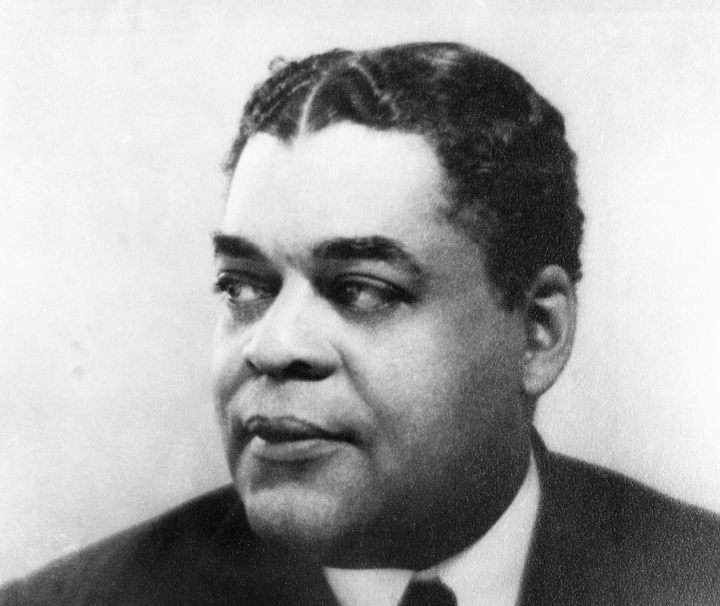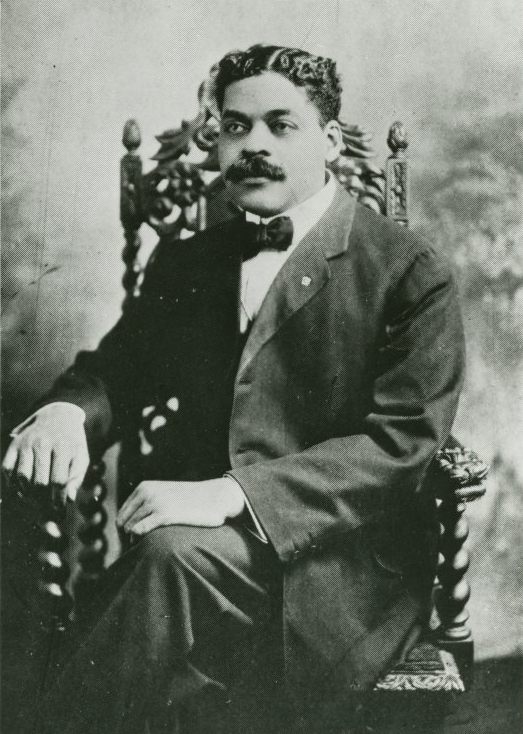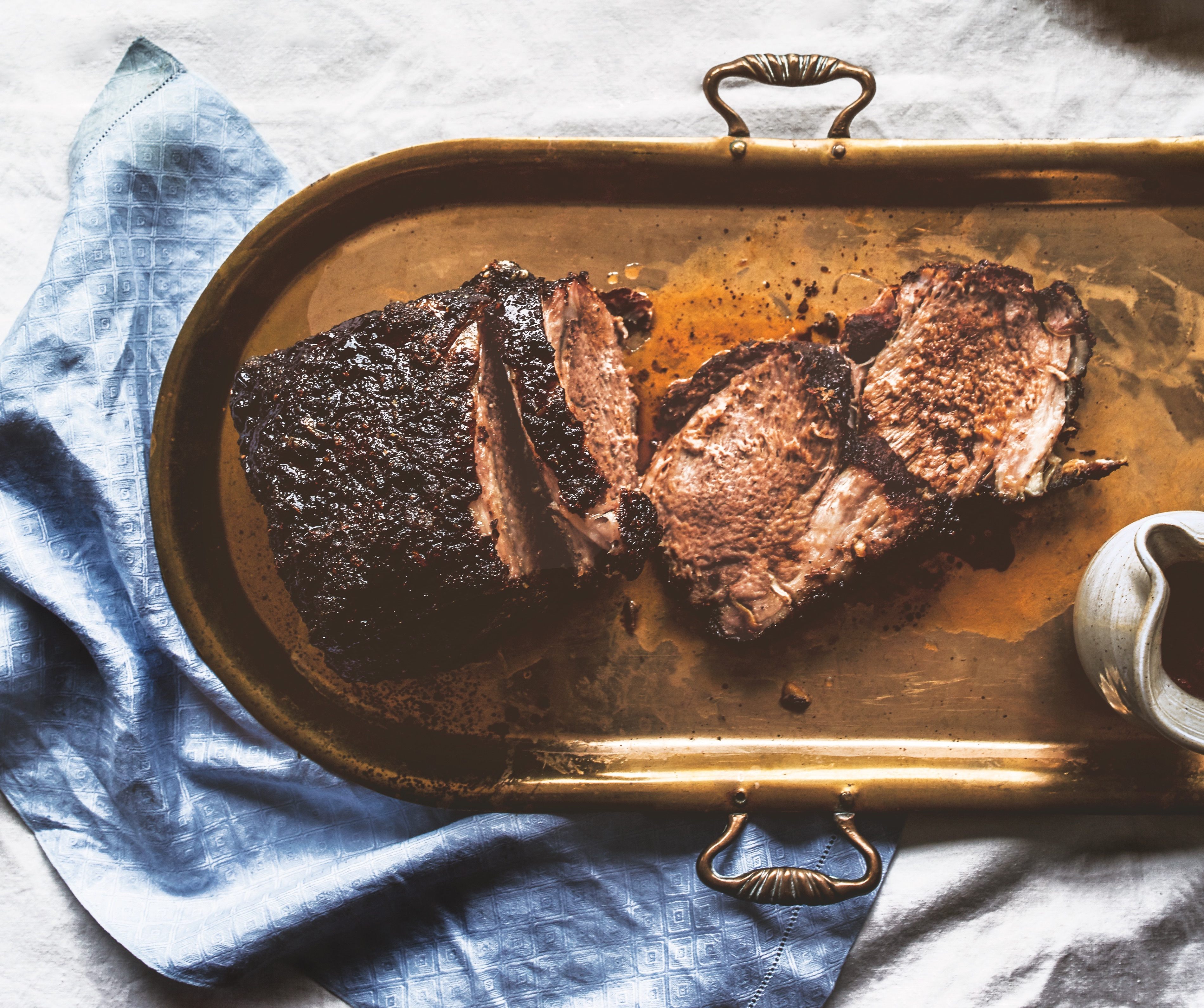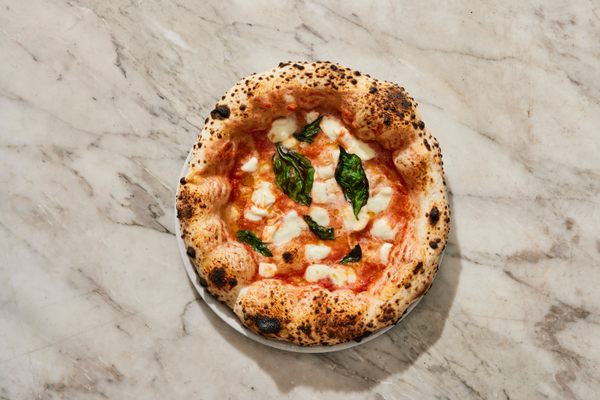

How America Rediscovered a Cookbook From the Harlem Renaissance
Arturo Schomburg’s work is still inspiring researchers and cooks today.
The story that Arturo Schomburg would often tell went something like this: When he was a child in late 19th-century Puerto Rico, his 5th-grade teacher told him that Black people had no history, no heroes, and no great moments. The remark filled him with fury. He’d been born to a Black mother and German father. The incident kindled a lifelong quest to prove the instructor wrong.
There are conflicting claims as to whether Schomburg fabricated this anecdote. The legend is certainly in keeping with the overarching logic of his biography: Schomburg would move to Harlem in 1891, becoming a towering figure of the Harlem Renaissance, which reached its zenith in the 1920s. “The Negro has been a man without history because he has been considered a man without a worthy culture,” he lamented in his influential 1925 essay, “The Negro Digs Up His Past.” He succeeded in changing such perceptions through his writing and preservation of artifacts that could easily have evaded the public gaze, such as artwork and slave narratives.
Bibliophile, historian, scholar—the words that spring to mind when one hears Schomburg’s name have rarely included “gastronome.” But recipes were objects of scholarly obsession for him, too, where he located what he termed “Negro genius.”

Schomburg’s passion for food was no passing fancy. Around 1930, just eight years before his death at 64, he began writing a cookbook, hoping to assemble 400 Afro-Atlantic recipes that showcased the breadth of Black ingenuity in the kitchen. He never finished it, and no one quite knows why. For decades, the proposal languished as it sat in the New York Public Library’s Schomburg Center for Research in Black Culture in Harlem.
In the past year, though, the proposal has suddenly gained new visibility. Schomburg’s unfinished work formed the basis of two very different books published in 2019: Rafia Zafar’s Recipes for Respect: African American Meals and Meaning, and Toni Tipton-Martin’s Jubilee: Recipes from Two Centuries of African American Cooking. The final chapter of Zafar’s book is a detailed dissection of Schomburg’s cookbook. In Jubilee, Tipton-Martin writes that Schomburg’s outline gave her “a blueprint of black culinary history,” using his recipe list as a map for her cookbook.
That the proposal is so crucial to two divergent works—Zafar’s book is a narrative nonfiction book, while Tipton-Martin’s is a cookbook—speaks to the enduring relevance of his vision. If America wasn’t quite primed to embrace a project of Schomburg’s ambition in the decades after his death, it certainly is now.

Schomburg didn’t even title the mere 22 pages of the cookbook. These remnants contain only one recipe, for gumbo smoothed with slices of okra or filé powder, the dried and ground leaves from a sassafras tree. He obtained this particular recipe from the writer Lafcadio Hearn’s La Cuisine Creole, a cookbook published in 1885. Schomburg indicated that he planned to use some recipes from working chefs and caterers, but it’s unclear where he planned to source others. In her book, Zafar hypothesizes that Schomburg likely would have looked to extant recipe books such as Hearn’s for more inspiration.
Schomburg listed out, one by one, hundreds of recipes that would populate his hypothetical cookbook. For breakfast, items such as kidney omelets, shrimp with hominy, or conserve of wild roses. Dinners of turtle soup, crawfish bisque, or squab pies. Suppers of grapefruit aspic with almonds, fresh fig ice cream, or pickled asparagus. Though Schomburg’s stated intentions were to include “various specialties from Haiti and the West Indies,” his recipe list skewed disproportionately towards his adoptive home of the United States, indicating that this recipe roadmap may not have matched his geographical aims.
These recipes would sit alongside biographical sketches of “famous Negro cooks,” though he also sought to highlight the “anonymous thousands” of brilliant cooks whose names no one else thought to record. His primary goal was to “show how the negro genius has adapted the English, French, Spanish and Colonial receipts taught him by his masters just as he adapted the stern Methodist hymns and the dour tenets of Protestantism—to his own temperamental needs,” he wrote.

The sheer scale of such a pursuit may explain why Schomburg couldn’t complete his cookbook: It was a massive undertaking. All-purpose cookbooks like Irma S. Rombauer’s The Joy of Cooking commanded popular attention in the era. Had Schomburg completed it, that cookbook would’ve been unlike any America had ever seen.
Because the cookbook went unpublished, though, it existed as a mere footnote to Schomburg’s legacy following his demise. The proposal quietly started gaining traction in scholarly circles in 1984, when the academic John Brown Childs posited that Schomburg’s work “offers important hints for an expanded consideration of Afro-American cooking” in an article for the journal Theory and Society. It was through that article that the scholar Doris Witt learned of Schomburg’s proposal. She then decided to discuss it in the book that both Tipton-Martin and Zafar acknowledge as their introduction to Schomburg’s cookbook: Witt’s Black Hunger: Food and the Politics of U.S. Identity (1999), now a seminal study of Black foodways in America.
Witt, an associate professor at the University of Iowa, tells me that she visited the Schomburg Center in the early ’90s as a graduate student working on a dissertation about the role of food in the works of Black writers such as Toni Morrison and Alice Walker. “I can remember the feeling of excitement about seeing it for myself, after having read Childs’s essay,” she says, recalling how she pored over the proposal in microfilm. Schomburg essentially validated the work of people like Witt long before anyone else did. He took Black foodways seriously.
“To the best of my knowledge, all of us who work or who have worked in the area of African American food studies simply perceive that Schomburg was really the first person we know of who recognized that African diasporic foodways should indeed be a field of scholarly study,” Witt says.

Back in the ’90s, though, few knew about Schomburg’s cookbook. Schomburg’s understanding of the sprawling nature of Black foodways was ahead of its time, but Witt hypothesizes that he may not have possessed the means to complete the cookbook because of its scope. He was just one man, after all.
Mentions of Schomburg’s proposal only occupy a few pages of Witt’s book. In it, she asserts that Schomburg’s manuscript went “underutilized” by scholars of the time. That lack of engagement has changed now. “That proposal was utterly inspired, truly visionary, and so I think it’ll continue to be cited for years to come, and younger generations of scholars and food writers and activists will return to it with a fresh point of view,” Witt predicts.
She isn’t surprised that interest has tilted in Schomburg’s favor in the two decades since she wrote Black Hunger. Both Tipton-Martin and Zafar were likely drawn to his proposal because it’s “a model for the kind of work they want to do,” Witt says, the “recovery of a buried past, and also using that work to disrupt limited and limiting conceptions of African American culture.”
Witt notes how Zafar, now a professor at Washington University in St. Louis, approaches Schomburg’s proposal with more skepticism than Witt did two decades ago. Why, for example, does his list of recipes contain so little from the Caribbean and South America, in spite of his upbringing in Puerto Rico?

Questions like these nagged at Zafar when she stumbled upon his proposal in 2014, the year that a residency from the National Endowment for Humanities brought her to the Schomburg Center. “There, returning to the Schomburg text when surrounded by his presence, I found myself drawn deeper into the mysteries surrounding the text—when and why did he write it?” Zafar tells me. “Why didn’t he finish it?”
Encountering Schomburg’s proposal felt like a clarifying moment for Zafar: She didn’t even know about his cookbook when she first began work on Recipes for Respect, yet his project seemed spiritually linked with hers. Her aspirations mirrored what Schomburg had attempted nearly a century ago. “Knowing the singular importance of the Schomburg archive as I did and do, devoting a chapter to this tantalizingly unfinished project just made sense,” she says.
Zafar has a few conjectures as to why Schomburg’s proposal is such an ignored part of his legacy. The text is one of the few documented indications of his interest in food, for one. “As a married man of his generation, he probably did little to no cooking for his family,” Zafar says. The proposal is also somewhat inaccessible. It’s hard to find at the Schomburg Center, if you aren’t looking for it.
Writing about Schomburg’s proposal, though, taught Zafar a great deal about the man himself. She learned he was a lover of good meals and good company. Spending so much time with Schomburg’s work reminded Zafar of his greater importance to the study of African American history.“Schomburg sought to capture the world of African diaspora food culture because he saw knowledge about the Black world as key to moving us all forward,” she says.

Tipton-Martin’s Jubilee, then, reads like the direct outcome of Schomburg’s forward-looking vision. As she writes in Jubilee, Tipton-Martin began working on the book as a follow-up to 2015’s The Jemima Code: Two Centuries of African American Cookbooks, her comprehensive study of cookbooks authored by Black women in the United States. Schomburg’s list of recipes provided her with a framework that she applied to the cookbooks she featured in The Jemima Code. She looked for patterns and recurrences in recipes that could tell her about the stamina of certain recipes across time.
In Jubilee, the “West Indies pork” that Schomburg lists in his proposal becomes a Caribbean roast pork flavored with rum, ginger, and allspice, grabbing cues from recipes by the artist John Pinderhughes and the singer Kelis. In the headnote for her corn and potato chowder with crab (inspired yet again by a Kelis recipe), Tipton-Martin nods to the butler William Deas’ legendary recipe for she-crab soup that Schomburg mentioned in his proposal. Like Zafar, Tipton-Martin finds room to acknowledge Schomburg’s blind spots, too, expressing surprise at how few cookies and cakes were in his list of recipes, in spite of what Tipton-Martin calls “a legacy of African American proficiency in baking.”
These gaps don’t diminish the prescience of Schomburg’s text. They just remind us that the proposal may best be read as an invitation to build on his life’s work and refine it, as if he foresaw that writers a century later would still be working to illuminate Black genius through food. His mission, born out of determination to find worth where others refuse to see it, isn’t over. Schomburg’s cookbook proposal gestures towards a future where the dominant culture finally honors Black creative wisdom instead of subjugating it. He knew that a people’s history, heroes, and great moments can be found in their food, too.
This article was commissioned in partnership with the Museum of Food and Drink. MOFAD’s upcoming show African/American: Making the Nation’s Table is the first major exhibition on the culinary contributions of black Americans.
Gastro Obscura covers the world’s most wondrous food and drink.
Sign up for our regular newsletter.
























Follow us on Twitter to get the latest on the world's hidden wonders.
Like us on Facebook to get the latest on the world's hidden wonders.
Follow us on Twitter Like us on Facebook